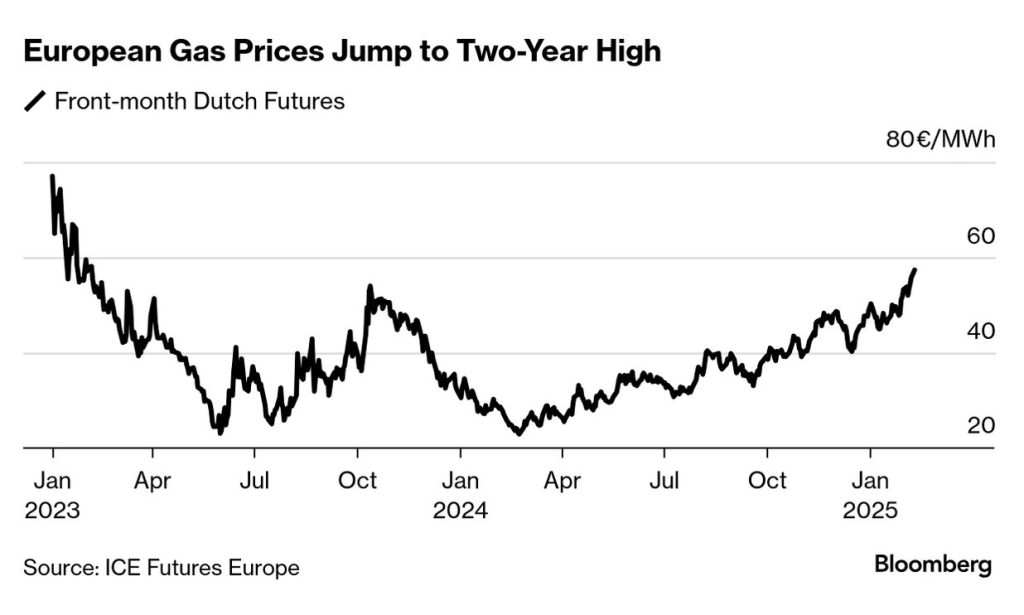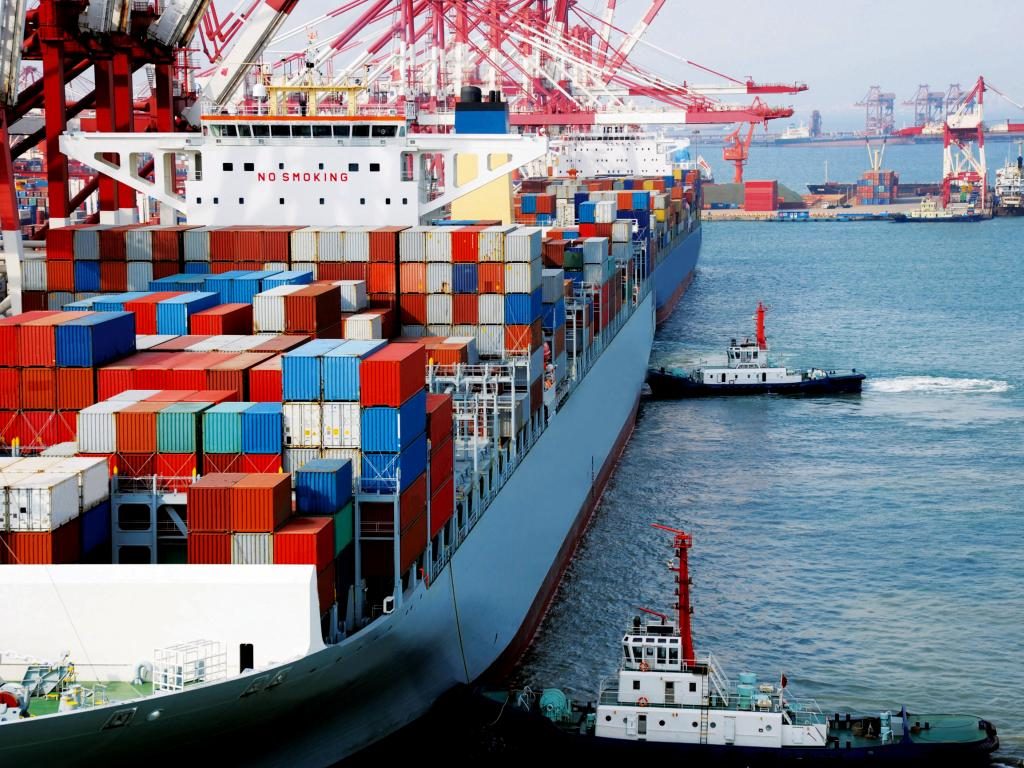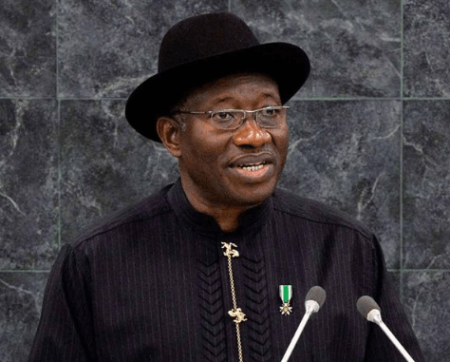
Lagos — Cold winter weather and geopolitical instability sent European gas prices soaring to a two-year high in the first quarter of this year.
That was the key takeaway from a new report on the European electricity market from energy data analyst Montel Analytics. The full report is attached to this email for your convenience.
The average TTF price – a key indicator of gas prices in Europe – reached €46.79/MWh in the first three months of this year, a 9% increase on the final quarter of 2024.
The rise was sparked by a cold winter which reduced storage levels, ongoing geopolitical tensions, and anxieties about a trade war with America after US president Donald Trump promised a raft of import tariffs on European countries.
The cold, calm weather led to several instances of brief Dunkelflaute periods, in which demand is high while there is little to no wind or solar generation. This resulted in periods of very high day-ahead prices in several countries across Europe.
In the first Dunkelflaute period on January 15, the highest prices were seen in south-eastern Europe, with Romania, Bulgaria, and Greece all seeing day-ahead prices peak at €452.13/MWh at 17:00 while prices rose above €300/MWh in central Europe. The second major spike five days later saw prices soar to €473.28/MWh in France, Benelux and much of central and southeastern Europe. In Britain, prices jumped to even higher levels (€619.2/MWh).
Jean-Paul Harreman, Director at Montel Analytics said: “Throughout much of January the general trend for gas prices was slow upward growth, but towards the end of the month this trend accelerated, with prices rising from €53.25/MWh at the beginning of January to €58.35/MWh on February 10. These spikes can be attributed to a cold snap in which European storage levels fell below 50% for the first time since June 2022, fuelling doubts that stocks will be able to be replenished fully before next winter. Ongoing geopolitical tensions in Ukraine and the Middle East and anxieties about the level of US import tariffs were also key drivers of the gas price rises.
“As we saw in the previous quarter, Q1 2025 saw multiple occurrences of brief “Dunkelflaute” periods, which require high levels of fossil fuel-powered generation and therefore result in very high prices. After price records were broken in mid-December last year, at least two further periods of similar tightness were recorded in the early part of 2025. What made the second major Dunkelflaute particularly unusual was that it occurred on a Sunday, the day of the week which typically sees the lowest demand.”
Fossil fuel generation jumped 23% on the previous quarter to 242.9TWh, with gas-fired power the major contributor (60%) to this total. Low renewable output was the main factor in this rise due mainly to low wind and hydro generation. In contrast, solar generation soared to 45.7TWh, the highest level recorded in any Q1 period on record, although this reflects growing solar capacity rather than particularly favourable weather.
Overall power demand remained flat, showing little sign of recovering from the sharp decline seen during the COVID-19 pandemic.
Jean-Paul Harreman added: “Since the 2022 energy crisis – when soaring gas and electricity prices led to a sharp decline in consumption, particularly across industrial sectors – demand across Europe has remained muted. Policymakers are trying to determine whether this decline is merely temporary or indicative of a more permanent shift. Compared with Q1 2024, demand across Europe was down by 2%, despite the winter of 2024-25 being somewhat colder. However, many of Europe’s biggest consumers saw slight increases on two years ago, including Germany (2%), France (3%) and Great Britain (3%).”
Renewables (biomass, hydro, wind, solar and waste) accounted for 44.5% of overall European power in the first quarter of this year, with nuclear (23.3%), gas (19.2%), coal/lignite (12.6%) oil (0.2%) and peat (0.1%) making up the rest.



